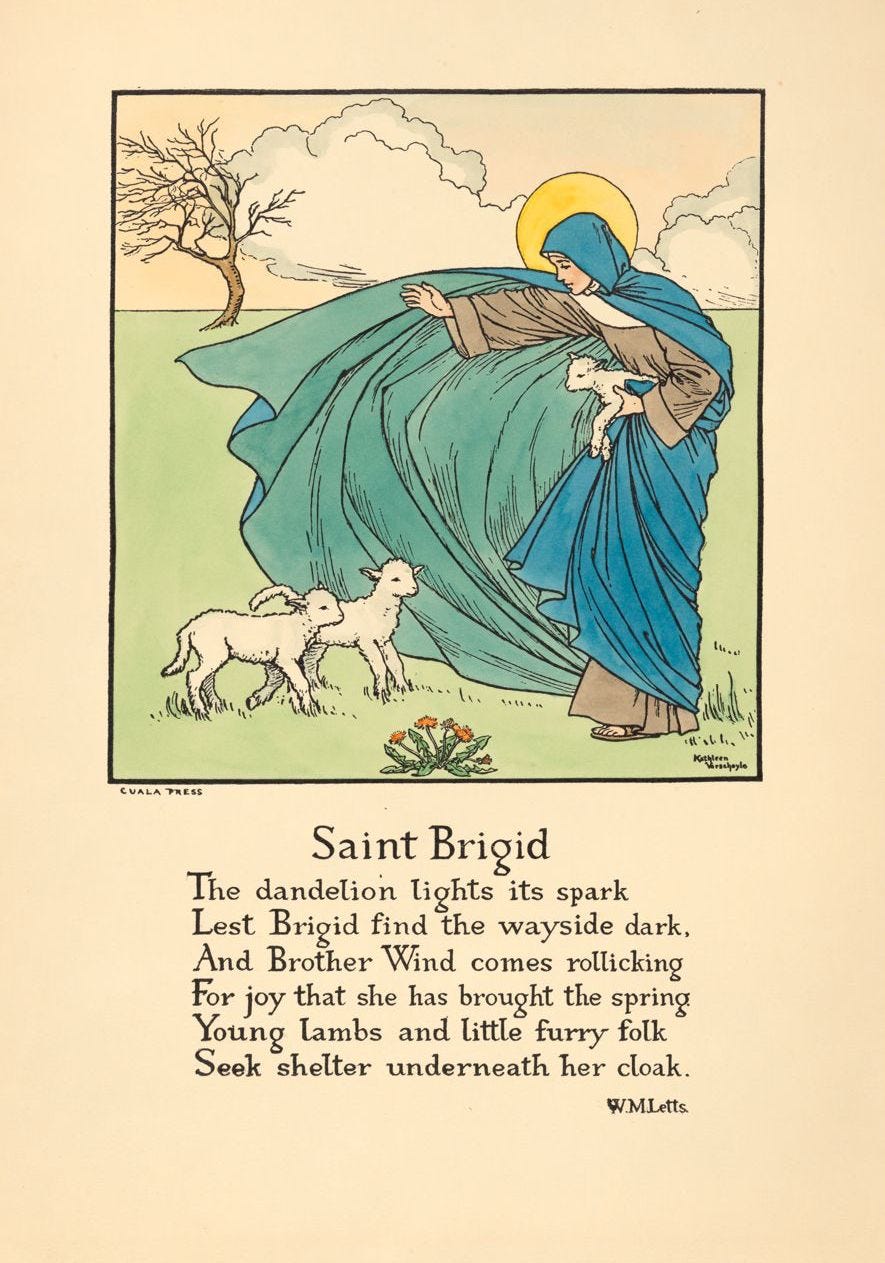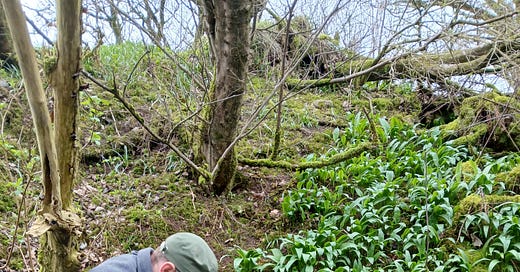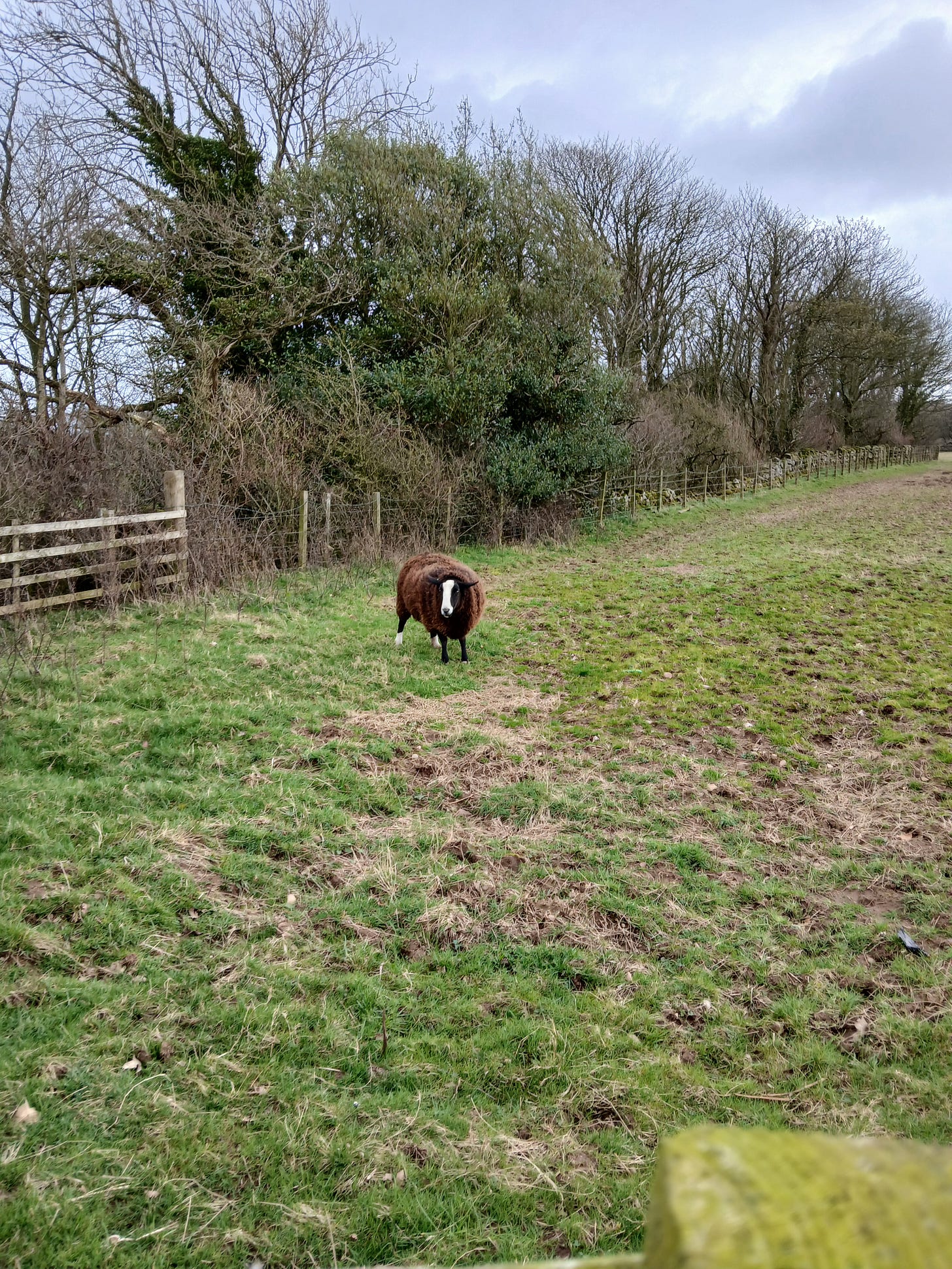Brydekirk is a charming town which hugs the west side of the river Annan in southern Scotland. There is not much information about the place, but the ruins of an old medieval church lie outside the town, and a little further past the church ruins, just off the road, is St Bryde’s holy well.
I was able to zoom in on the map that the Canmore website provided, and find exactly where the holy well was. Nick and I drove along a narrow country road, and plunged into the woods, where the path soon led us to a spring gushing out at the base of a beech tree, and emptying into (and overflowing) a small stone basin, medieval in date. The area was very overgrown, and we couldn’t really see the stone basin, but we stood by the spring and drank of its waters.
The Bryde Kirk and well basin both date from the medieval period, and it is believed that both fell out of use after the Reformation. There are mentions of an earlier village existing, but information on the current town all dates from the 1800s.
St Bryde, is one of the many spellings of St Brigid, Bride, etc. as she is known by many spellings. Though she is a well-known Irish saint, there are several dedications to her all over Scotland as well, as can be seen in this map on the Saints in Scottish Place-Names website.

St Brigid was an abbess in early Christian Ireland, and founded the abbey of Kildare. She has the same name as a Celtic goddess, and they share the same feast day. She was born circa 450 AD, to Dubhthach, a cheiftan of Leinster, and a slave woman, who was banished from the house when Dubhthach’s wife discovered she was pregnant. A Druid bought her, and when Brigid was born, tried to feed her, but she would vomit, not wishing to take nourishment from a heathen. A white cow with red ears came on the scene and nourished her instead. This is very interesting, as animals from the ancient Celtic otherworld were always white and red. The Druid seems to have been a good man, as he freed Brigid and her mother.
There is a lot of pagan overlapping in her story. The church she founded in Kildare was called the Church of the Oak, and was built over a shrine to the goodess Brigid.
She is the patron saint of many things, including babies, poets, printers, blacksmiths and sailors.
Near where we parked our car, there was a curious sheep that regarded us timidly, but without fear. We were out in the country, on a narrow country road. It was a quiet, gentle place, and I am glad that we were able to find this ancient holy spring.






Beautiful!! I’m so glad you visited this place, and shared it with us. Love that Brigid poem, too.